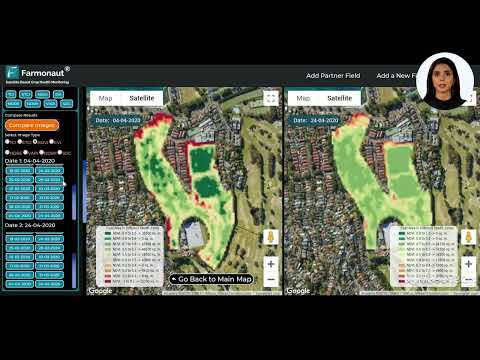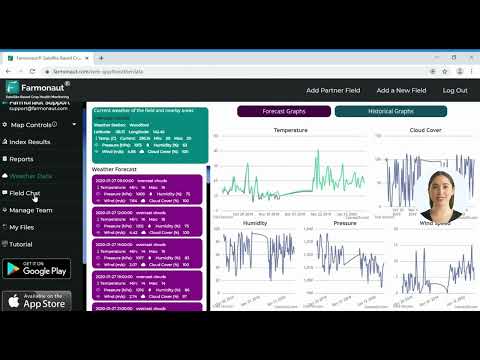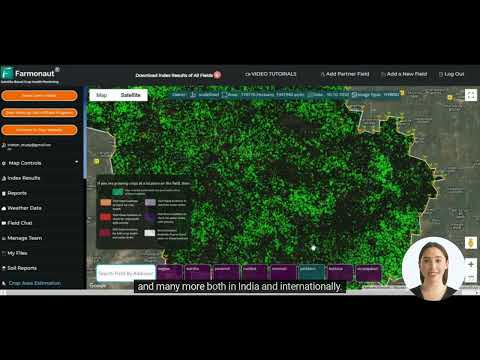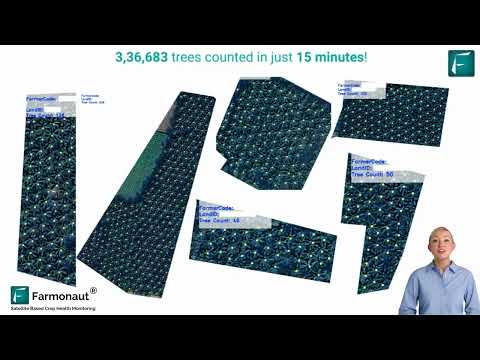Unlocking Profitability: Oilseeds Market Analysis and Agricultural Commodity Comparison for Institutional Investors

In the ever-evolving landscape of agricultural commodities, oilseeds have emerged as a pivotal sector for institutional investors seeking to diversify their portfolios and capitalize on global food demand. As we delve into this comprehensive market analysis, we’ll explore the intricacies of the oilseeds industry, compare key players, and provide valuable insights for making informed investment decisions.
“Institutional ownership and return on equity are key metrics in analyzing oilseed market profitability for investors.”
The Oilseeds Market: A Global Perspective
The oilseeds market encompasses a wide range of crops, including soybeans, rapeseed, sunflower seeds, and palm kernels. These versatile commodities serve as the foundation for numerous products, from cooking oils to biofuels, making them essential components of the global food and energy supply chains.
As institutional investors, understanding the dynamics of this market is crucial for identifying profitable opportunities and mitigating risks. Let’s begin our analysis by examining two major players in the agricultural commodity space: Australian Oilseeds (NASDAQ:COOT) and Archer-Daniels-Midland (NYSE:ADM).
Company Profiles: Australian Oilseeds vs. Archer-Daniels-Midland
To provide a clear comparison between these two agricultural giants, we’ve compiled a table of key financial metrics:
| Metric | Australian Oilseeds (COOT) | Archer-Daniels-Midland (ADM) |
|---|---|---|
| Market Cap ($B) | 0.032 | 26.43 |
| P/E Ratio | N/A | 12.77 |
| Net Margin (%) | N/A | 2.10 |
| Return on Equity (%) | N/A | 10.44 |
| Earnings Per Share ($) | N/A | 3.61 |
| Institutional Ownership (%) | 13.0 | 78.3 |
| 52-Week Price Range ($) | 2.50 – 5.00 | 45.10 – 78.74 |
| Analyst Price Target ($) | N/A | 55.11 |
| Revenue Growth YoY (%) | N/A | 5.7 |
| Gross Income ($B) | 0.022 | 85.53 |
This side-by-side comparison reveals significant disparities between the two companies, highlighting the importance of thorough analysis when considering investments in the agricultural sector.
Market Capitalization and Scale
The most striking difference between Australian Oilseeds and Archer-Daniels-Midland is their market capitalization. ADM, with a market cap of $26.43 billion, dwarfs COOT’s $32 million valuation. This vast difference in scale has implications for institutional investors, particularly regarding liquidity and market influence.
- ADM’s larger size provides greater liquidity, making it easier for institutional investors to take substantial positions without significantly impacting the stock price.
- COOT, being a smaller company, may offer higher growth potential but comes with increased volatility and risk.
For institutional investors managing large portfolios, ADM’s scale may be more attractive, as it allows for substantial investments without the risk of overexposure to a single, smaller entity.
Profitability Metrics: A Closer Look
Profitability is a crucial factor for institutional investors when evaluating potential investments in the agricultural commodity sector. Let’s examine the key profitability metrics for both companies:
Net Margins
Archer-Daniels-Midland boasts a net margin of 2.10%, while data for Australian Oilseeds is not available. This metric is particularly important in the agricultural commodities sector, where margins can be thin due to factors such as weather volatility, global trade dynamics, and fluctuating input costs.
ADM’s positive net margin, though modest, indicates the company’s ability to generate profit from its revenue, which is crucial for long-term sustainability and growth in the competitive oilseeds market.
Return on Equity (ROE)
Return on equity is a vital metric for institutional investors, as it measures a company’s efficiency in generating profits from shareholders’ equity. ADM’s ROE of 10.44% suggests that the company is effectively utilizing its equity to generate returns for shareholders.
The lack of ROE data for Australian Oilseeds makes it challenging for investors to assess its efficiency in this regard, potentially raising concerns about the company’s profitability and management effectiveness.
Earnings Per Share (EPS)
Earnings per share is a fundamental metric used by investors to gauge a company’s profitability on a per-share basis. ADM’s EPS of $3.61 provides a clear picture of its earnings power, while the absence of this data for Australian Oilseeds limits investors’ ability to make direct comparisons.
For institutional investors, a strong and growing EPS is often indicative of a company’s ability to generate consistent returns and potentially increase shareholder value through dividends or stock buybacks.

Institutional Ownership: A Sign of Confidence
The level of institutional ownership can be a strong indicator of a stock’s perceived stability and growth potential. In this comparison, we see a significant difference between the two companies:
- Australian Oilseeds: 13.0% institutional ownership
- Archer-Daniels-Midland: 78.3% institutional ownership
The high level of institutional ownership in ADM suggests that professional investors and money managers have confidence in the company’s long-term prospects. This can be attributed to several factors:
- ADM’s established market position and global presence
- Consistent financial performance and profitability
- Strong corporate governance and transparency
For institutional investors considering entering the oilseeds market, ADM’s high institutional ownership may provide a level of reassurance. However, it’s important to note that lower institutional ownership, as seen with Australian Oilseeds, doesn’t necessarily indicate poor performance. It may instead reflect the company’s smaller size, shorter operating history, or focus on a niche market segment.
Market Volatility and Risk Assessment
When analyzing the oilseeds market, understanding volatility and risk is crucial for institutional investors. Let’s examine how our two companies compare in terms of market stability:
Beta Values
Australian Oilseeds has a beta of -0.18, indicating that its stock price is negatively correlated with market movements and less volatile than the overall market. In contrast, Archer-Daniels-Midland has a beta of 0.72, suggesting that while it’s less volatile than the market, it tends to move in the same direction.
For institutional investors, these beta values offer insights into potential portfolio diversification benefits:
- COOT’s negative beta could provide a hedge against market downturns
- ADM’s lower positive beta suggests relative stability while still offering some market exposure
52-Week Price Range
Examining the 52-week price range provides a snapshot of each stock’s volatility over the past year:
- Australian Oilseeds: $2.50 – $5.00
- Archer-Daniels-Midland: $45.10 – $78.74
While both stocks have experienced significant price movements, it’s important to consider these ranges in the context of their respective share prices. ADM’s wider absolute range reflects its higher share price, while COOT’s range represents a larger percentage of its overall value.
Revenue and Growth Potential
For institutional investors seeking long-term value, understanding a company’s revenue growth and future potential is essential. Let’s analyze the available data:
Gross Revenue
- Australian Oilseeds: $22.12 million
- Archer-Daniels-Midland: $85.53 billion
The stark difference in revenue scale underscores the vastly different market positions of these two companies. ADM’s massive revenue base reflects its status as a global leader in agricultural processing and commodities trading, while COOT operates on a much smaller scale, potentially focusing on niche markets or regional operations.
Revenue Growth
While specific year-over-year growth data for Australian Oilseeds is not available, ADM reported a 5.7% revenue growth. This growth rate, while modest, is significant given ADM’s already substantial revenue base and the often cyclical nature of agricultural commodities.
For institutional investors, consistent revenue growth in a large, established company like ADM can signal:
- Effective management and operational efficiency
- Ability to capitalize on market opportunities
- Resilience in the face of industry challenges
“Net margins and earnings per share provide crucial insights into the financial performance of agricultural commodity giants.”
Analyst Recommendations and Price Targets
Analyst opinions and price targets can provide valuable insights for institutional investors. While we don’t have specific analyst recommendations for Australian Oilseeds, Archer-Daniels-Midland has garnered attention from the investment community:
- ADM has a consensus price target of $55.11, indicating a potential upside of 19.50% from its current trading price.
- The company has received 2 sell ratings and 7 hold ratings, resulting in an average rating score of 1.78 (on a scale where 1 is a strong sell and 5 is a strong buy).
These analyst perspectives suggest a cautious outlook for ADM, with the majority of analysts recommending holding the stock rather than actively buying or selling. For institutional investors, this mixed sentiment may warrant deeper analysis of ADM’s future prospects and potential challenges in the oilseeds market.
Industry Trends and Market Dynamics
To provide a comprehensive analysis for institutional investors, it’s crucial to consider broader industry trends and market dynamics affecting the oilseeds sector:
Global Demand for Plant-Based Proteins
The rising popularity of plant-based diets and alternative proteins has created new opportunities in the oilseeds market. Soybeans, in particular, have seen increased demand as a key ingredient in many plant-based products. This trend could benefit companies like ADM, which have extensive soybean processing capabilities.
Biofuel Industry Growth
The expanding biofuel industry, driven by environmental concerns and energy security initiatives, continues to be a significant driver of demand for oilseeds. Companies with diversified operations in both food and fuel markets may be better positioned to capitalize on this trend.
Climate Change and Agricultural Volatility
Increasing extreme weather events and changing climate patterns pose significant risks to oilseed production. Investors should consider companies’ geographic diversification and risk management strategies when evaluating their resilience to these challenges.
Technological Advancements in Agriculture
The adoption of precision agriculture techniques and other technological innovations can significantly impact productivity and profitability in the oilseeds sector. Companies investing in these technologies may gain competitive advantages in the long term.
For instance, Farmonaut offers satellite-based crop monitoring solutions that can help oilseed producers optimize their yields and manage resources more efficiently. While not directly related to our company comparison, such technological advancements are reshaping the agricultural landscape and may influence future market dynamics.
Investment Considerations for Institutional Investors
Based on our analysis of Australian Oilseeds and Archer-Daniels-Midland, as well as broader market trends, here are key considerations for institutional investors looking to enter or expand their positions in the oilseeds market:
1. Scale and Market Position
ADM’s dominant market position and global scale offer stability and liquidity, making it an attractive option for large institutional investments. However, smaller companies like Australian Oilseeds may offer higher growth potential, albeit with increased risk.
2. Diversification Benefits
The contrasting beta values of COOT and ADM present interesting diversification opportunities. Institutional investors may consider balancing their portfolios with a mix of negatively correlated stocks (like COOT) and more stable, market-aligned options (like ADM).
3. Profitability and Financial Health
ADM’s established profitability metrics and consistent earnings provide a clearer picture of its financial health. For investors prioritizing stability and predictable returns, ADM may be the preferred choice. However, the lack of comprehensive financial data for Australian Oilseeds doesn’t necessarily preclude it as an investment opportunity, especially for those seeking exposure to niche or emerging markets.
4. Growth Potential and Market Trends
Consider how each company is positioned to capitalize on emerging trends such as plant-based proteins, biofuels, and sustainable agriculture. ADM’s diversified operations and global presence may provide advantages in adapting to changing market demands.
5. Technological Adoption
Evaluate each company’s investment in and adoption of agricultural technologies. Those leveraging advanced solutions, such as satellite-based crop monitoring or AI-driven yield optimization, may have a competitive edge in the long run.
For instance, platforms like Farmonaut’s API offer valuable data and insights that can enhance agricultural operations. While not directly tied to our company analysis, such technological considerations are increasingly important in the modern agricultural landscape.
6. Risk Management
Consider each company’s approach to managing risks associated with climate change, geopolitical tensions, and market volatility. Diversified operations and robust risk management strategies are crucial in the volatile agricultural commodities sector.
7. Regulatory Environment
Stay informed about regulatory changes affecting the oilseeds industry, including trade policies, environmental regulations, and subsidies. Companies with adaptable business models and strong government relations may be better positioned to navigate regulatory challenges.
Conclusion: Navigating the Oilseeds Market
The oilseeds market presents a complex landscape for institutional investors, with opportunities ranging from established global players like Archer-Daniels-Midland to smaller, potentially high-growth companies like Australian Oilseeds. Our analysis reveals significant differences between these two entities in terms of scale, profitability, market position, and growth potential.
For institutional investors, the decision between investing in a company like ADM or exploring opportunities with smaller players like COOT will depend on various factors, including:
- Investment goals and risk tolerance
- Desired exposure to agricultural commodities
- Portfolio diversification strategies
- Long-term outlook on global food demand and alternative protein sources
While ADM offers stability, consistent profitability, and global market presence, Australian Oilseeds and similar smaller companies may provide opportunities for higher growth and exposure to niche markets or emerging agricultural trends.
As the agricultural sector continues to evolve, driven by technological advancements, changing consumer preferences, and environmental concerns, institutional investors must remain vigilant and adaptable. Regularly reassessing market conditions, company performances, and industry trends will be crucial for making informed investment decisions in the dynamic oilseeds market.
By leveraging comprehensive market analyses, financial metrics, and industry insights, institutional investors can position themselves to capitalize on the opportunities presented by the global oilseeds market while effectively managing the associated risks.
Earn With Farmonaut: Affiliate Program
Earn 20% recurring commission with Farmonaut’s affiliate program by sharing your promo code and helping farmers save 10%. Onboard 10 Elite farmers monthly to earn a minimum of $148,000 annually—start now and grow your income!
FAQs for Institutional Investors in the Oilseeds Market
- What are the main factors driving growth in the oilseeds market?
Key drivers include increasing global population, rising demand for plant-based proteins, growth in the biofuels industry, and expanding applications in various industrial sectors. - How does climate change impact the oilseeds market?
Climate change can lead to unpredictable weather patterns, affecting crop yields and quality. This can result in supply volatility and price fluctuations in the oilseeds market. - What role does technology play in the oilseeds industry?
Technology, such as precision agriculture, genetic modifications, and advanced analytics, plays a crucial role in improving crop yields, reducing costs, and enhancing sustainability in oilseed production. - How do trade policies affect oilseed investments?
Trade policies, including tariffs and export/import regulations, can significantly impact the global flow of oilseeds and their derivatives, affecting market prices and company performances. - What are the key metrics to consider when evaluating oilseed companies?
Important metrics include market share, production capacity, geographic diversification, profit margins, return on equity, and technological adoption rates.
For institutional investors looking to leverage technology in agricultural investments, consider exploring solutions like Farmonaut’s API Developer Docs for insights into advanced agricultural monitoring and analysis tools.
Staying Informed: Resources for Oilseeds Market Analysis
To make informed investment decisions in the oilseeds market, institutional investors should regularly consult a variety of resources:
- Industry Reports: Organizations like the USDA and FAO provide comprehensive reports on global agricultural markets, including oilseeds.
- Financial Databases: Platforms such as Bloomberg and Reuters offer real-time market data and company financials.
- Academic Research: Universities and research institutions publish studies on agricultural trends and technological advancements.
- Trade Publications: Journals like “Oilseeds Focus” and “Grain & Oilseed Review” provide industry-specific insights.
- Technology Platforms: Solutions like Farmonaut offer valuable data on crop health and agricultural productivity.
By leveraging these resources and maintaining a comprehensive understanding of market dynamics, institutional investors can position themselves to capitalize on opportunities in the ever-evolving oilseeds market.
For those interested in exploring technological solutions for agricultural investments, consider checking out the  or the
or the  for mobile access to agricultural insights.
for mobile access to agricultural insights.
Final Thoughts: The Future of Oilseeds Investments
As we look to the future, the oilseeds market continues to present both challenges and opportunities for institutional investors. The sector’s vital role in global food security, coupled with its expanding applications in sustainable industries, positions it as a key area for long-term investment strategies.
Successful navigation of this market will require a multifaceted approach, combining traditional financial analysis with an understanding of emerging agricultural technologies and global sustainability trends. By staying informed, adaptable, and forward-thinking, institutional investors can unlock the profitability potential of the oilseeds market while contributing to the advancement of sustainable agricultural practices worldwide.
Ready to explore cutting-edge solutions for agricultural investments? Check out  for advanced satellite-based crop monitoring and analysis tools.
for advanced satellite-based crop monitoring and analysis tools.




